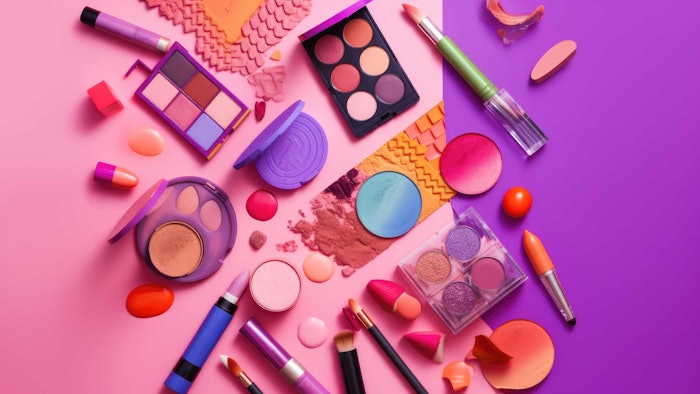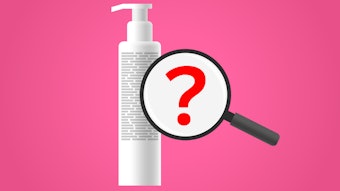
The EU Commission officially published several previously proposed amendments to EU Cosmetic Products Regulation (CPR) that will restrict or ban nine cosmetic ingredients. Full details are available in the Official Journal of the European Union. Following is an edited overview, along with brief insights from recent Vogue and Elle UK reports that consider what these new rules mean for brands.
Log in to view the full article
The EU Commission officially published several previously proposed amendments to EU Cosmetic Products Regulation (CPR) that will restrict or ban nine cosmetic ingredients. Full details are available in the Official Journal of the European Union. Following is an edited overview, along with brief insights from recent Vogue and Elle UK reports that consider what these new rules mean for brands.
The Cosmetic, Toiletry and Perfumery Association recently highlighted the affected ingredients, including: retinol/retinyl acetate/retinyl palmitate, alpha arbutin, arbutin, 4-methylbenzylidene camphor (4-MBC), genistein, daidzein, kojic acid, triclosan and triclocarban. The specific updates for each are described below; transition periods apply.
How might these restrictions impact product manufacturers? Vogue Business recently posed this question, focusing in particular on kojic acid. The new concentration limit is set to 1%, and while many products on the market already comply with this level, per the source, those who don't will either need to reformulate or promote other skin-brightening products they have on the market.
Elle UK also recently highlighted the impact on retinol, whose limit's been set to 0.05% retinol equivalents (RE) in body lotion, and 0.3% RE in leave-on and rinse-off products. According to the source, users should not panic, however, as these new limits are still effective. And the industry is not likely to cease using retinol.
It's more likely that technologies to improve the delivery of retinol will be developed; although some recent cosmetic ingredient innovations could prove to be comparable alternatives. Examples include a fermented biotin, bakuchiol extracts and re-engineered versions of bakuchiol and retinoids.
So, what are the new limits on these ingredients that formulators should be aware of? Below we outline the specifics, followed by the transition periods.
See related: EU Lays Down the Law on Cyclic Silicones D5, D6 — Now What?
Limits on Vitamin A aka Retinol, Retinyl Acetate, Retinyl Palmitate
The EU Commission often looks to the Scientific Committee for Consumer Safety (SCCS) for insights on concerns over cosmetic ingredients and products. It did in the case of vitamin A ingredients, and the SCCS Opinion indicated these skin conditioners are safe but the public's overall exposure to it could exceed the upper level established by the European Food Safety Authority.
Responding, the EU Commission restricted the use of retinol, retinyl acetate and retinyl palmitate to a maximum of 0.05% RE in body lotion, and 0.3% RE in leave-on and rinse-off products. A warning for products containing it also must appear on the label, especially to alert consumers who eat vitamin A-rich foods or take vitamin A supplements: Contains vitamin A. Consider your daily intake before use.
Alpha Arbutin and Arbutin Restrictions
The SCCS previously concluded alpha-arbutin, arbutin and their combination, often used for skin brightening and conditioning, are safe for consumers but stressed that if hydroquinone (CAS No. 123-31-9) is included, it should be present only at unavoidable trace levels. Responding to this, the EU Commission restricted alpha-arbutin to a maximum 2% in face creams and 0.5% in body lotions, and arbutin to a maximum 7% in face creams.
Prohibited: 4-Methylbenzylidene Camphor
In April 2022, the SCCS reported it could not determine the safety of the UV filter 4-methylbenzylidene camphor (4-MBC), as it had insufficient data to fully evaluate potential genotoxicity. However, there was sufficient evidence of its endocrine-disrupting activity and effects on both the thyroid and estrogen systems. Still, it was not possible to determine a maximum safe usage level.
The SCCS therefore determined 4-MBC should no longer be allowed as a UV filter, UV absorber or light stabilizer. Therefore, products containing 4-MBC cannot be placed on the EU market as of May 1, 2025; and products containing it cannot be made available to the EU market as of May 1, 2026.
Genistein and Daidzein Restrictions
In 2022, the SCCS concluded both genistein and daidzein are safe for use in cosmetics up to 0.007% and 0.02%, respectively. Considering this opinion, the EU Commission adopted these levels as restrictions.
Genistein and daidzein are typically used as skin conditioners, protectants and antioxidants. Initial concerns were raised over the potential endocrine-disrupting properties of phytoestrogens but the SCCS found that, based on the available data on the aglycone form of genistein and daidzein, these materials are safe at the concentrations listed.
Kojic Acid Limit
Previously, kojic acid also has been named for potential endocrine-disrupting properties, although after review of the available data, the SCCS published its Opinion that this ingredient is safe as a skin brightening agent in cosmetic products up to a maximum level of 1%. The SCCS did note some concerns identified in animal models, although these do not directly translate to human responses. The EU Commission has thus restricted the use of this ingredient for skin brightening in face and hand products up to 1%.
Triclosan Ban and Restrictions
The SCCS concluded that triclosan's use as a preservative in topical cosmetics and toothpaste was safe up to 0.3% for both children (6 months to 18 years) and adults, except for body lotion. However, it was not safe in toothpaste for children under three when used with other products containing triclosan.
Its use as a preservative in mouthwash was deemed safe for adults up to 0.2% when used alone but not with other products containing it. For children and adolescents, it was not safe in mouthwash at 0.2%, even when used individually.
The EU Commission has therefore restricted the use of triclosan as a preservative in cosmetics to 0.3% for toothpastes, hand and body soaps, shower gels, deodorants (non-spray), face powders, blemish concealers and nail cleaning products. It is banned in mouthwash or toothpaste for children under three. Related labeling is also required on toothpaste containing triclosan: Not to be used for children under 3 years of age.
Triclocarban Limits and Prohibition
Similarly to triclosan, the SCCS determined the use of triclocarban as a preservative up to 0.2% is safe in topical products for both children (6 months to 18 years) and adults. It is not safe in mouthwash for adults and children, or in toothpaste for children under six. In addition, triclocarban used for other purposes is safe up to 1.5% in rinse-off products for both children (6 months to 18 years) and adults.
The EU Commission has thus restricted triclocarban as a preservative to a maximum 0.2% for all cosmetic products except mouthwash, where it is not allowed. For other purposes, it is restricted to 1.5% in rinse-off products. It is not allowed in toothpaste for children under six. In relation, cautionary labelling is required on toothpastes containing it: Not to be used for children under 6 years of age.
Transition Periods
Transition periods for these amendments are as follows.
- 4-MBC-containing products cannot be placed on the EU market as of May 1, 2025; products containing it cannot be made available to the EU market as of May 1, 2026.
- Genistein, daidzein, kojic acid, alpha-arbutin and arbutin-containing products cannot be placed on the EU market as of Feb. 1, 2025; products containing it cannot be made available to the EU market as of Nov. 1, 2025.
- Retinol, retinyl acetate, retinyl palmitate-containing products cannot be placed on the EU market as of Nov. 1, 2025; products containing it cannot be made available to the EU market as of May 1, 2026.
- Triclocarban and triclosan-containing products, in which these ingredients are used as preservatives, may remain on the EU market until Dec. 31, 2024, as long as they comply with the conditions applicable on April 23, 2024. If they were placed on the market before this date, they may continue to be made available on the EU market until Oct. 31, 2025.










